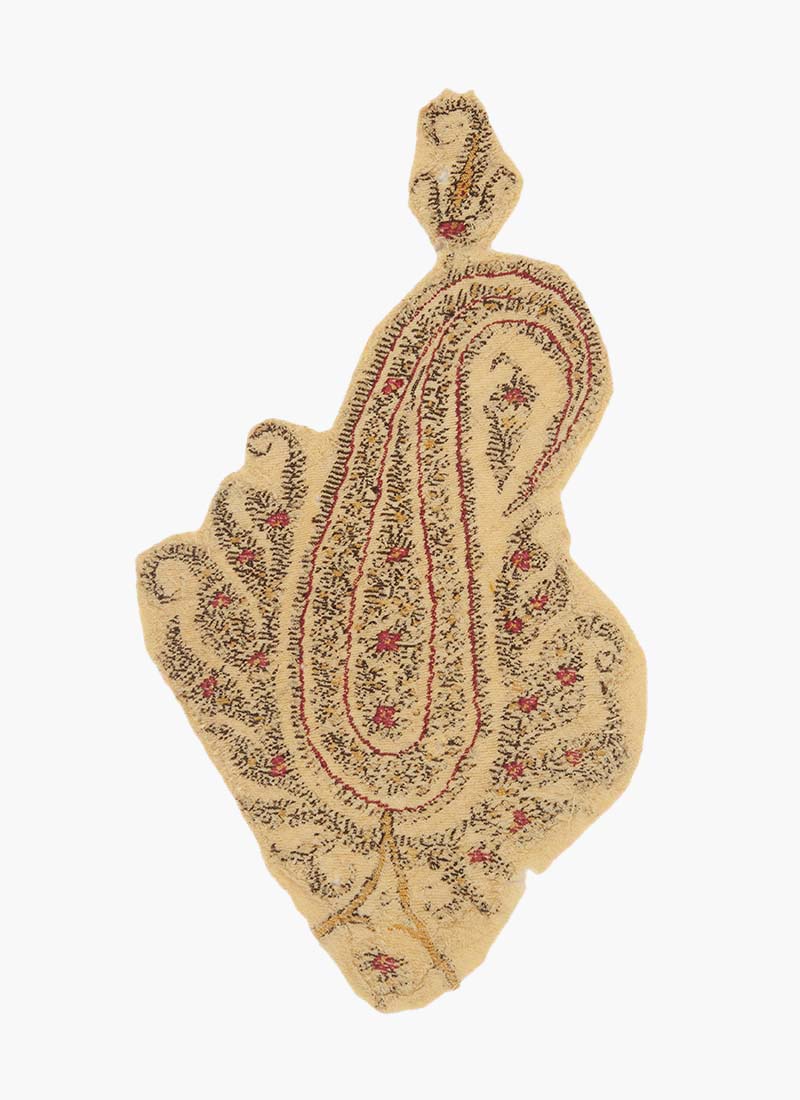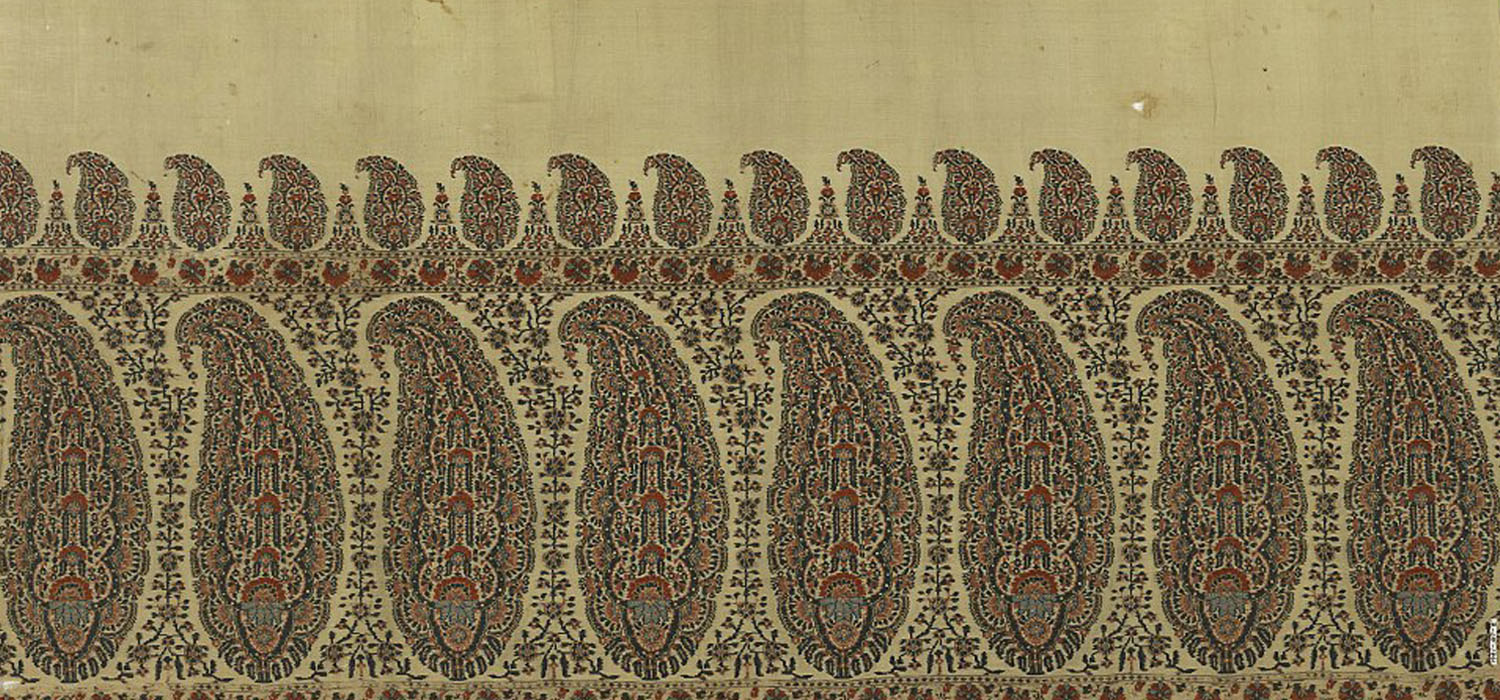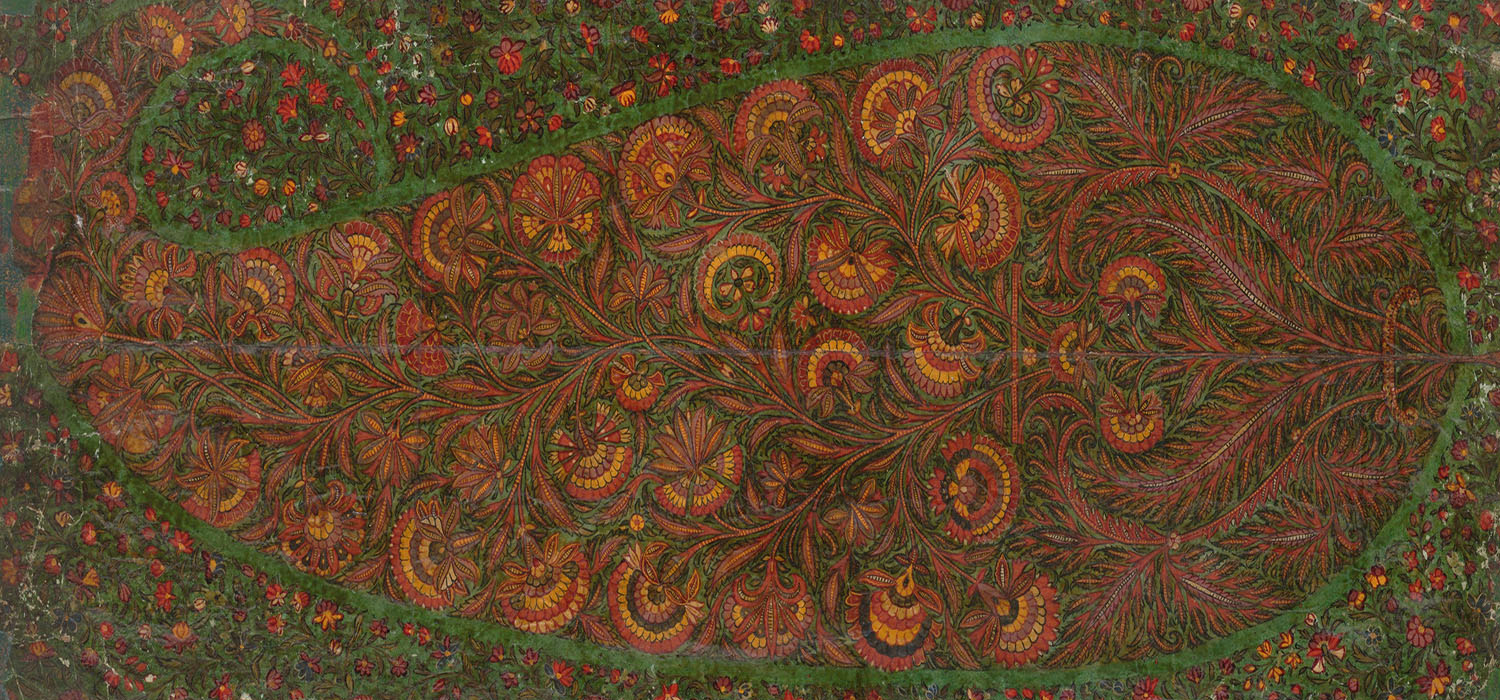ARTICLE
Paisley
In Europe, the design went through another transformation as the hollow of the boteh came to be filled in with intricately stylised floral compositions. The earliest iterations of manufactured Kashmiri shawls came from Edinburgh, Scotland which was soon eclipsed by another Scottish town, Paisley, hence giving it its popular name. It was also the first town to successfully adopt the Jacquard loom in production, which allowed an intricate pattern while easing the weaver’s task. With its integration into European fashion and industry, especially in Great Britain and France, the paisley motif was not only used on other garments besides the shawl, but also came to be painted and printed. The motif drew on more design references from Parisian design books from the 1840s than it did from the designs of the Kashmiri shawls. Through the nineteenth and early twentieth century, it came to be printed on dresses, coats, ties, wallpapers, bedspreads and so on. Additionally, during the 1960s, the fashion movement now termed as “Peacock Revolution” saw menswear become more flamboyant, employing the paisley motif.
Today, the paisley remains one of the dominant motifs used in garments, decorative textiles and textile arts. It is difficult to pin down a source of origin for the boteh but the trajectory of its transformation from boteh to paisley records a significant episode in textile design history and qualifies its ubiquity.
Bibliography
Kallan, Ankita. “Evolution of paisley motif of Kashmir: A report on paisley motif of Kashmir.” International Journal of Home Science, 4(1). 2018. pp 172–180.
Karpinski, Caroline. “Kashmir to Paisley.” The Metropolitan Museum of Art Bulletin, Vol. 22, No. 3. November 1963. http://www.jstor.org/stable/3258212
Skarratt, Ben. “From India to Europe: The Production of the Kashmir Shawl and the Spread of the Paisley Motif.” Global History of Capitalism Project. University of Oxford, August 2018. https://globalcapitalism.history.ox.ac.uk/sites/default/files/globalcapitalism/documents/media/case_04_-_the_paisley_0.pdf









